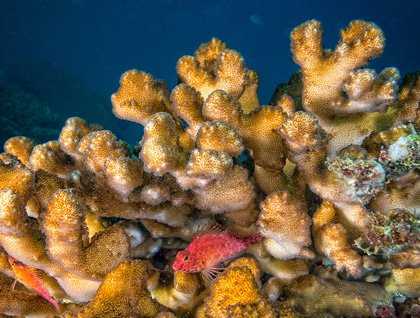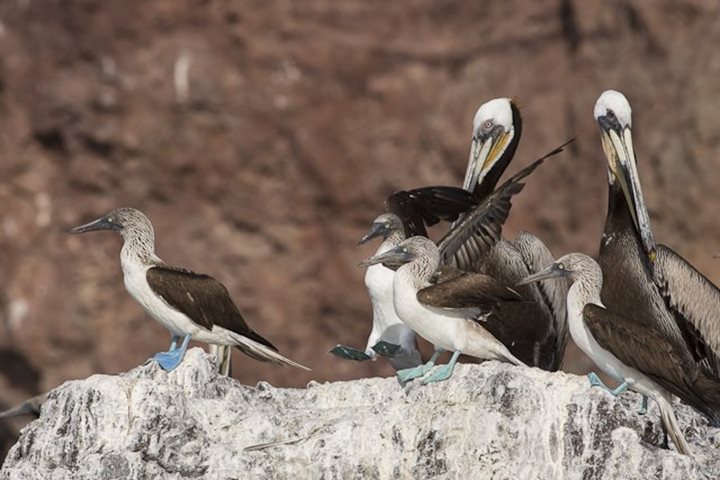It’s good to have a Plan B while traveling in the Gulf of California. Oriented north-south and with almost 1000 miles of potential fetch, the Gulf can be a funnel for northerly winds and choppy swell. Luckily for all of us on National Geographic Sea Bird, Isla Espiritu Santo and Isla Partida have many beautiful coves to tuck away while the north wind blows. Comprised of many separate volcanic rock layers, the island is a study in the geology of the Baja Peninsula and also a great subject for photography. Pillows of soft, volcanic tuft have been sculpted for thousands of years by salty and sandy winds, resulting in amorphous shapes of smooth, seemingly melting rock. As the sun broke over Isla Partida’s southwest ridges, the beautiful coastline of Ensenada Grande was painted in perfect morning light for but a brief few minutes.
Some may prefer the morning hikes up the desert arroyos looking for side-blotched lizards (Uta stansburiana) or antelope ground squirrels, for many, including the younger travelers on board, snorkeling was the day’s highlight. As frigatebirds soared overhead and brown pelicans stood on nearby perches, we donned our snorkel gear and splashed into the blue-green waters of this very protected bay. Although the volcanic tuft is soft, some corals are able to grow here and are home to my favorite denizen, the coral hawkfish. Shouts of “Pufferfish!” could be heard everywhere as the awkward yet nimble porcupine fish swam through amongst the rubble and reef. We watched giant damselfish defend their home rocks from marauding goatfish and the pugnacious attitudes of Cortez damsels. The reef was alive today as the wind brought with it productivity and food for the reef-bound fish. Although the wind can make waste to the best laid plans, it’s a vital aspect of life here in the Gulf and without it the sea would be a liquid desert devoid of marine life.







